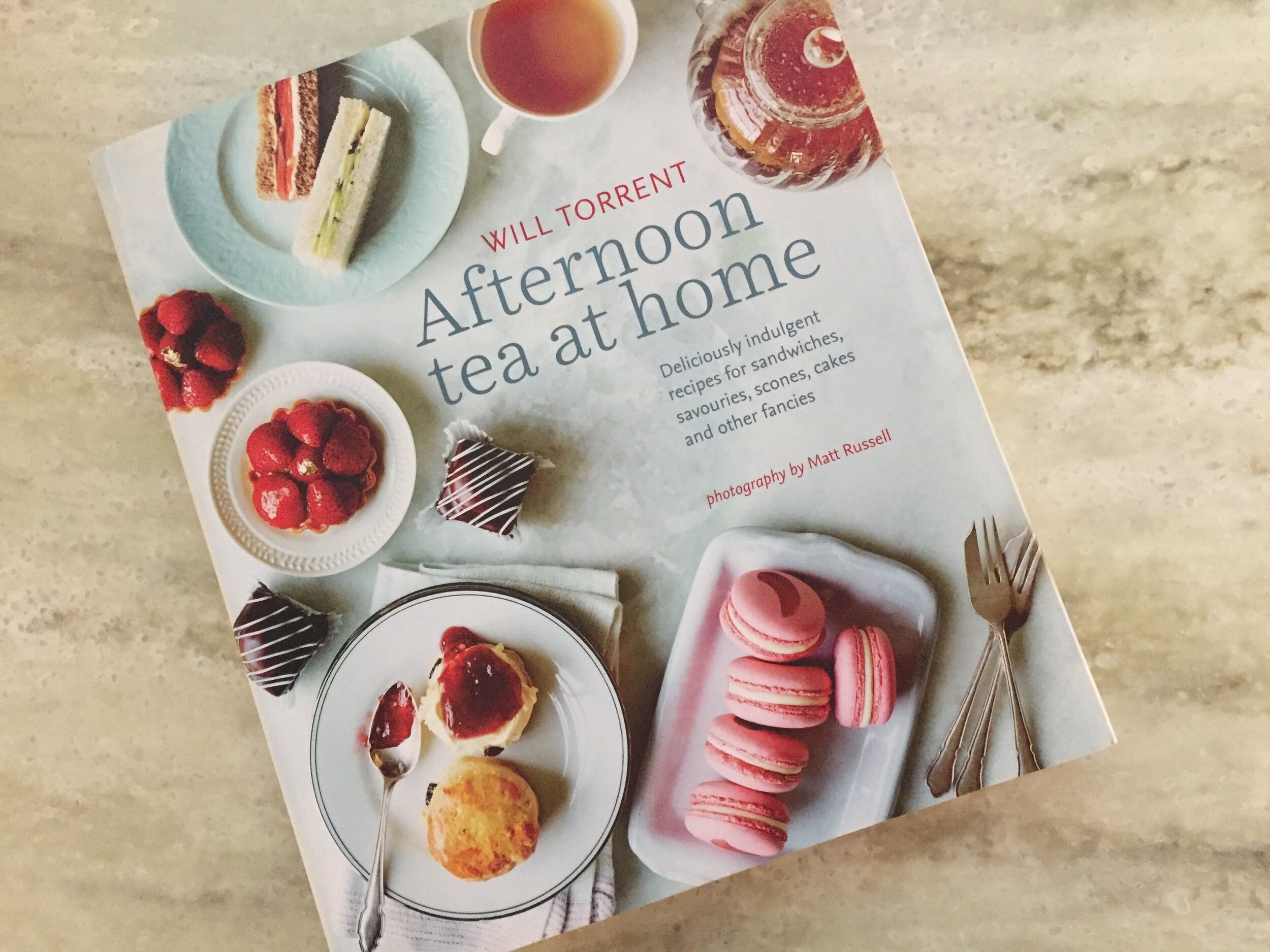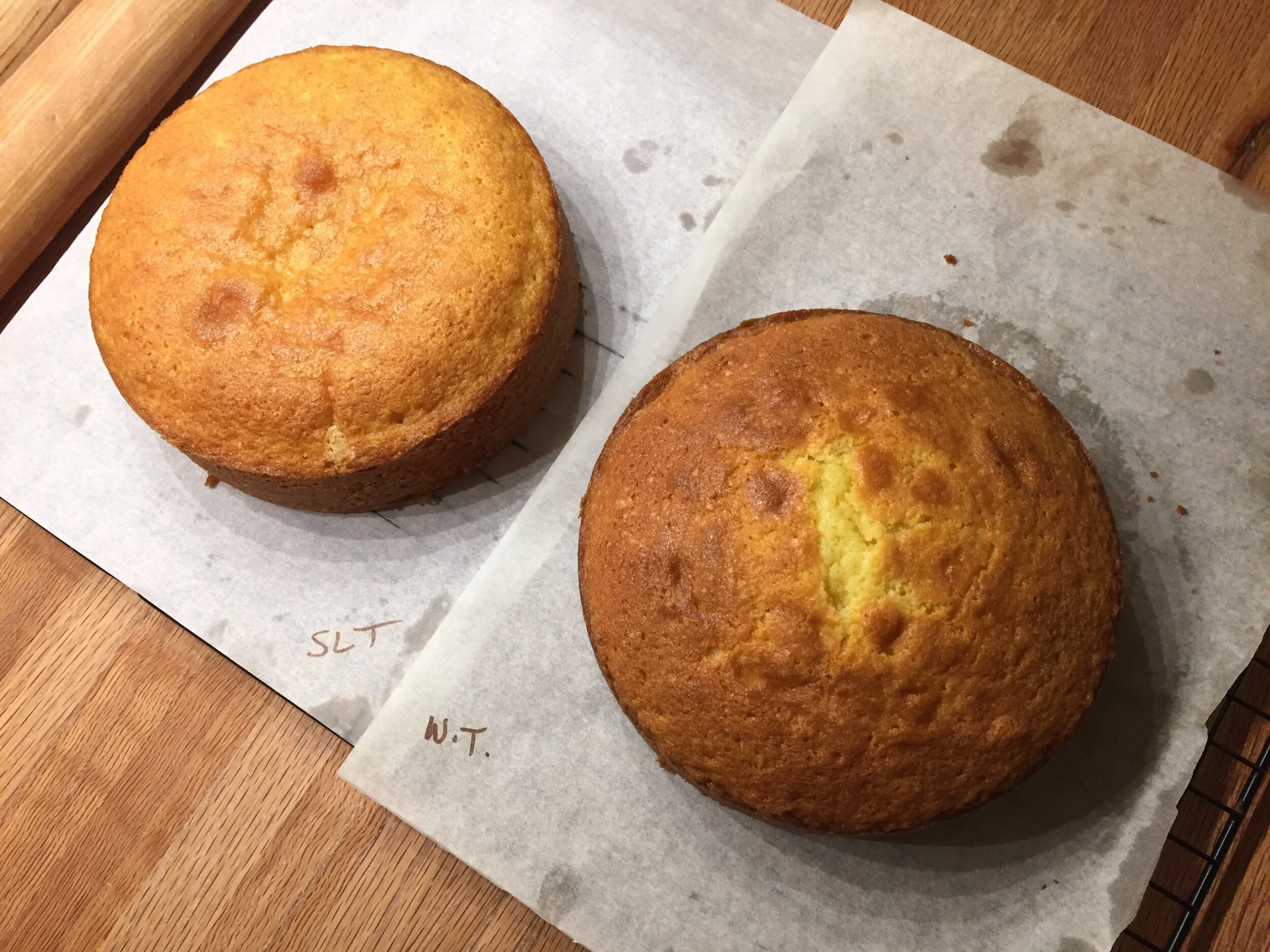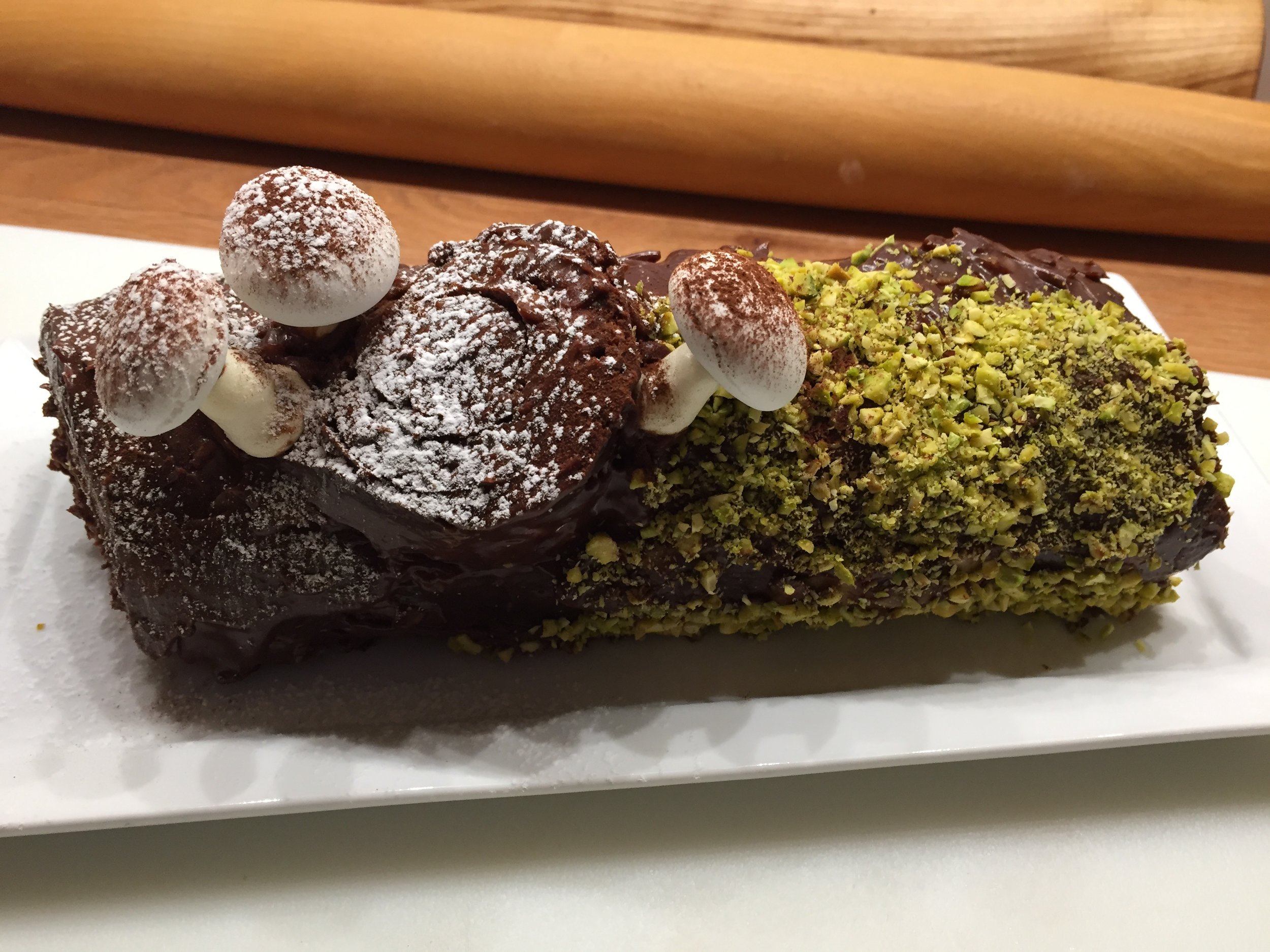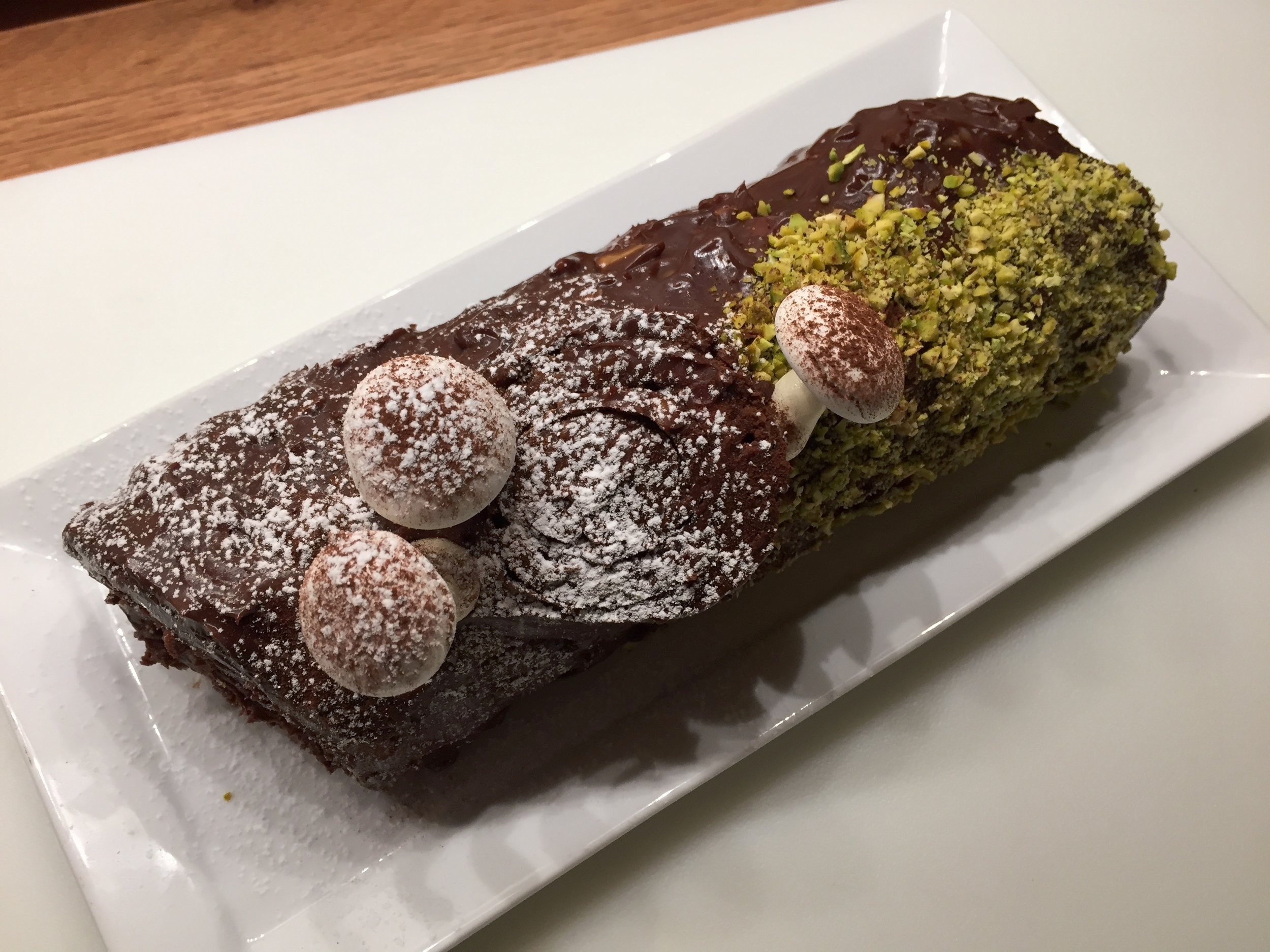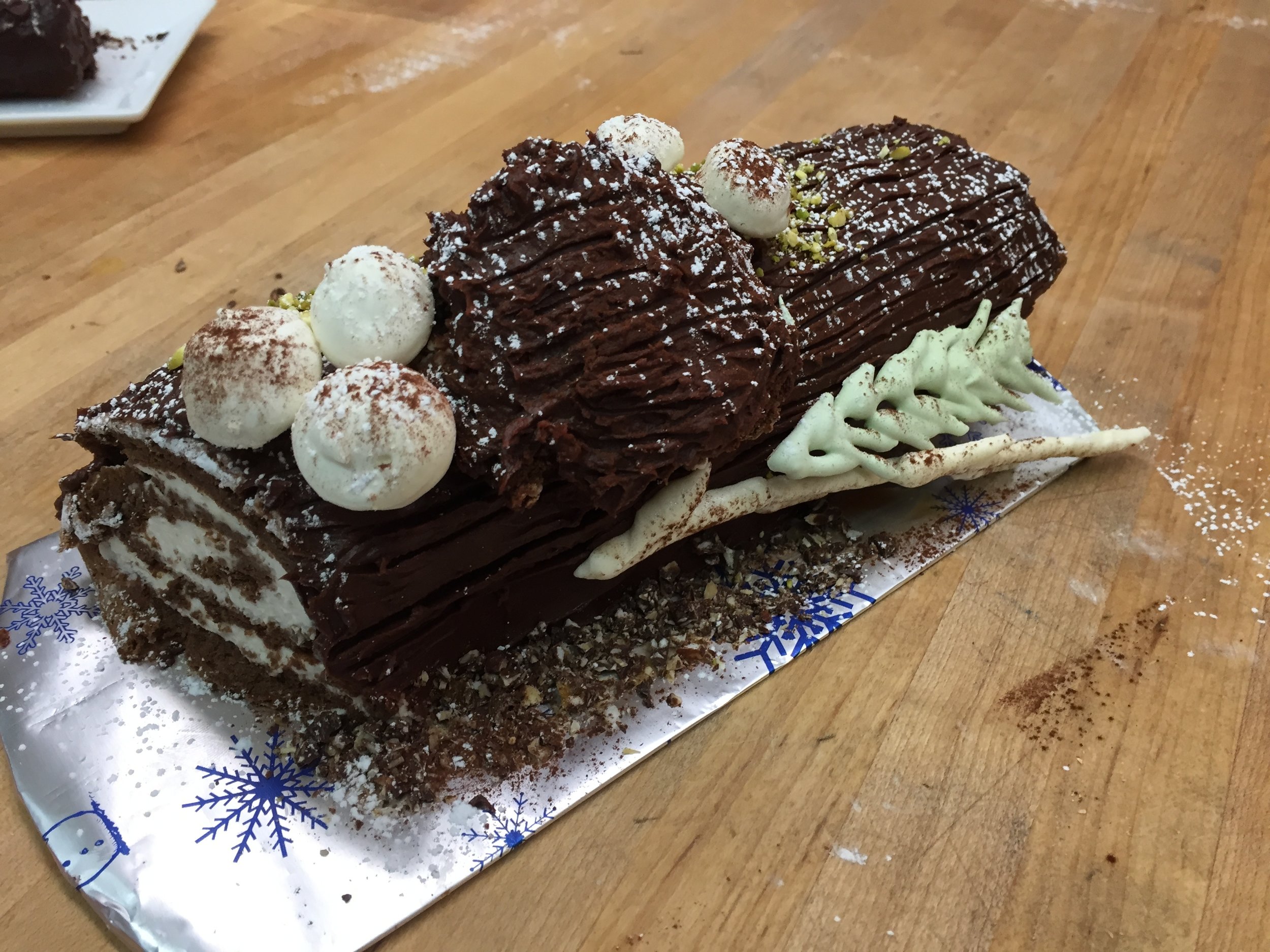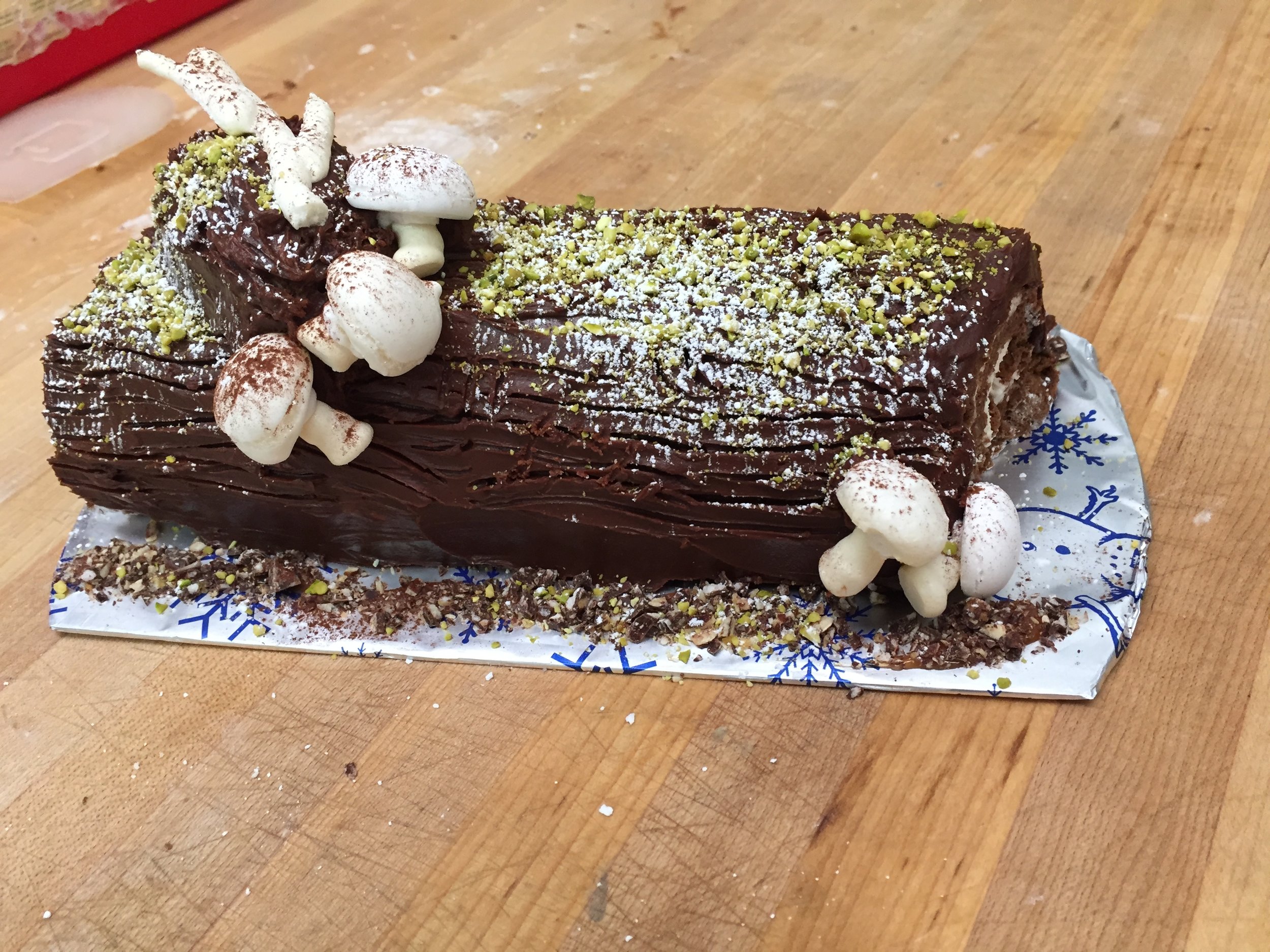Victoria sponge
/Sur La Table is currently offering a “Great British Baking” class on the winter/early spring calendar and I’m on the docket to teach these British specialties.
In addition to sticky toffee pudding and sausage rolls, the classic Victoria sponge cake is on the menu, so why not trial SLT’s recipe along side another one by British chef Will Torrent - just for fun of course!
Chef Torrent has written a number of books, one of which I purchased a year or so ago. It’s chock full of goodies for one of my most enjoyable past times - afternoon tea. His recipe for Victoria sponge is a tad different due to the replacement of about a quarter of the all purpose flour with cornstarch, the result being a lighter texture.
I also reviewed a number of other Victoria sponge recipes and found that some call for self-rising flour (or self-raising as the Brits say) which is a softer flour with baking powder and salt already in the mix. Some call for cake flour, another softer flour without any leavening additions. Many simply use all purpose flour. As always, there’s more than one way to skin a cat!
I’m sure many of you know the substitution if you don’t happen to have cake flour in your pantry - place 2 tablespoons cornstarch in a one cup measure, top it off with all purpose flour to yield one cup. Sift it together and voilà! Cake flour.
The base recipe for Vic-sponge is similar to pound cake: equal weights butter, sugar, and flour, plus eggs (usually a bit less by weight), baking powder, salt and vanilla. Many also have a small amount of milk blended in at the end - some give a specific amount, some a range of anywhere from 1-4 tablespoons (depending on the amount of batter/size of the cake). The milk is intended to “slacken” the mixture making it less stiff for spreading evenly in the pan.
This recipe is for a six inch double layer cake. The batter can be baked in ONE buttered/parchment lined/buttered again/floured pan and then sliced into two layers once cooled OR in TWO prepared six inch-ers which takes out the layer slicing step. Just remember the two shallower layers won’t need quite as long to bake.
Note: double the recipe for an 8” cake, either baked in one pan sliced into two layers or two pans with shallower layers ready to assemble.
All ingredients should be at room temperature. The differences between the SLT and Torrent recipes are a tad more baking powder in SLT’s and the replacement of about a quarter of the flour with cornstarch in Torrent’s.
Here you go:
Heat your oven to 350ºF. Butter the bottom of your cake pan(s), place a round of parchment down, butter parchment and sides of pan(s) and dust with flour.
Break 2 large (~ 100 g) eggs into a small bowl and lightly beat them. In the bowl of a stand mixer fitted with the paddle attachment, cream 113 g softened unsalted butter with 113 g granulated sugar on medium high for 3-5 minutes until light and fluffy. Scrape down the bowl. Reduce speed to medium low and add 1 teaspoon vanilla extract (or vanilla bean paste) and the lightly beaten egg in three additions, blending fully and scraping down after each addition. On low speed add 113 g all purpose flour (88 g ap + 25 g cornstarch in Torrent’s version), 1.5 teaspoons baking powder (1 tsp in Torrent’s) and 1/4 teaspoon fine sea salt and mix just until combined.
I like to take my bowl right off the mixer and finish things up by hand with a spatula - it helps to get down into the bottom to be sure everything is blended in. Then fold in 1-2 tablespoons whole milk as needed to slacken the mixture. I went with the smaller quantity and both batters came out with a bit of heft, yet nice and smooth and easy to work with.
Transfer batter to the prepared pan and smooth the top . Below is SLT’s - they both looked pretty much the same going into the oven.
Bake about 25 minutes until springy to touch in the center and a cake tester comes out clean.
Torrent’s rose into a dome while SLT’s stayed flat with just a bit of a dent in the center. Not to worry.
Once cooled, slice into two layers. A little tighter crumb on Torrent’s perhaps.
Spread a layer of strawberry (or jam of your choice) on the bottom and then spread a layer of lightly sweetened whipped cream over the jam. Sandwich ‘em up!
Dust with powdered sugar and you’re good to go!
When slicing you’ll invariably get some cream and jam ooze but it certainly doesn’t affect the flavor. On the right below is Torrent’s more domed version. They both have a nice crumb and golden color.
And guess what! They both taste great. What a lovely combo of jam, cream and vanilla cake. Steve and I noted that Torrent’s texture was a bit lighter but not really a huge difference at all.
Store covered in the fridge and enjoy a slice for several days to come. Not bad.
Until next time. Stay warm and think spring!


